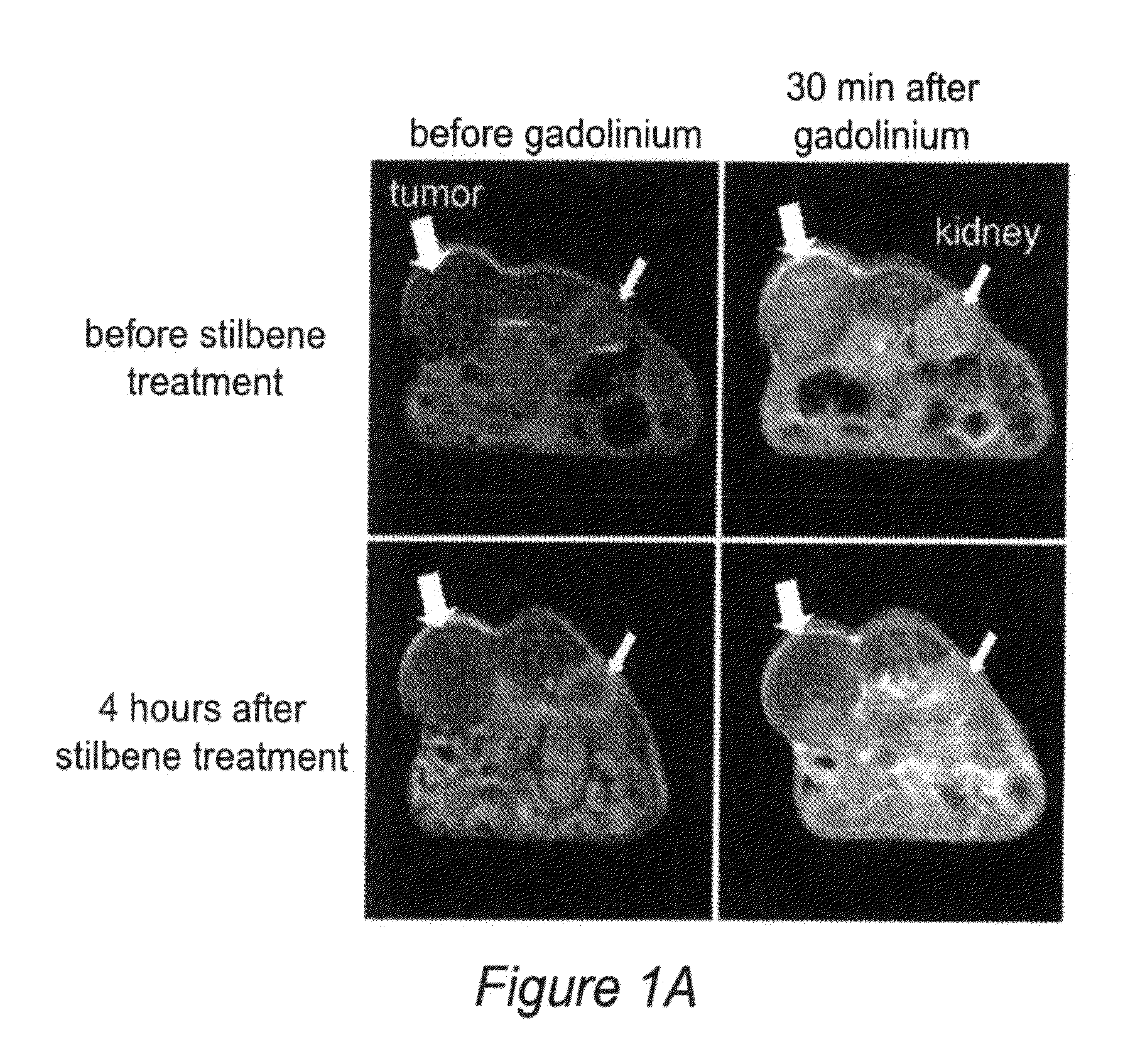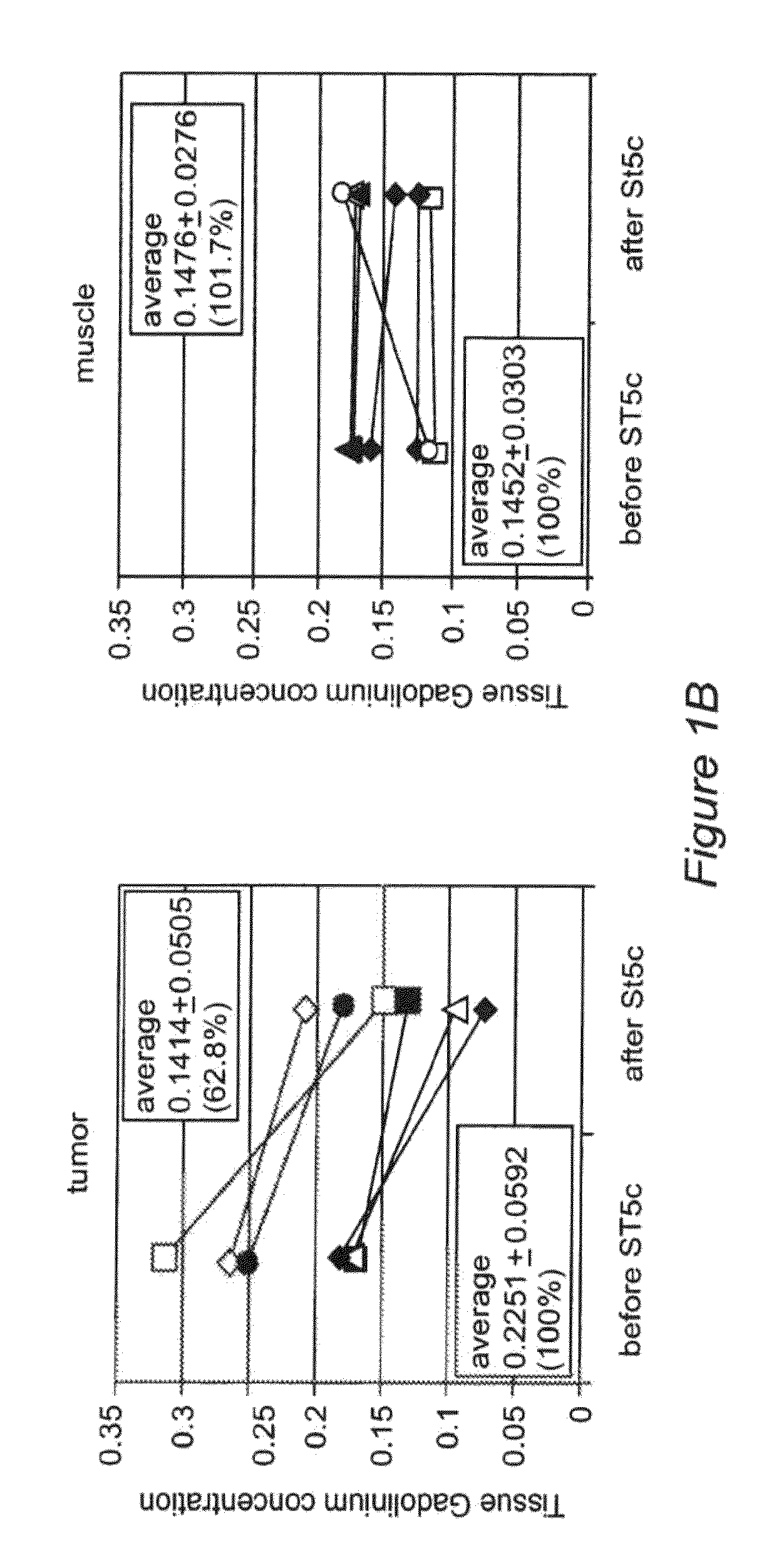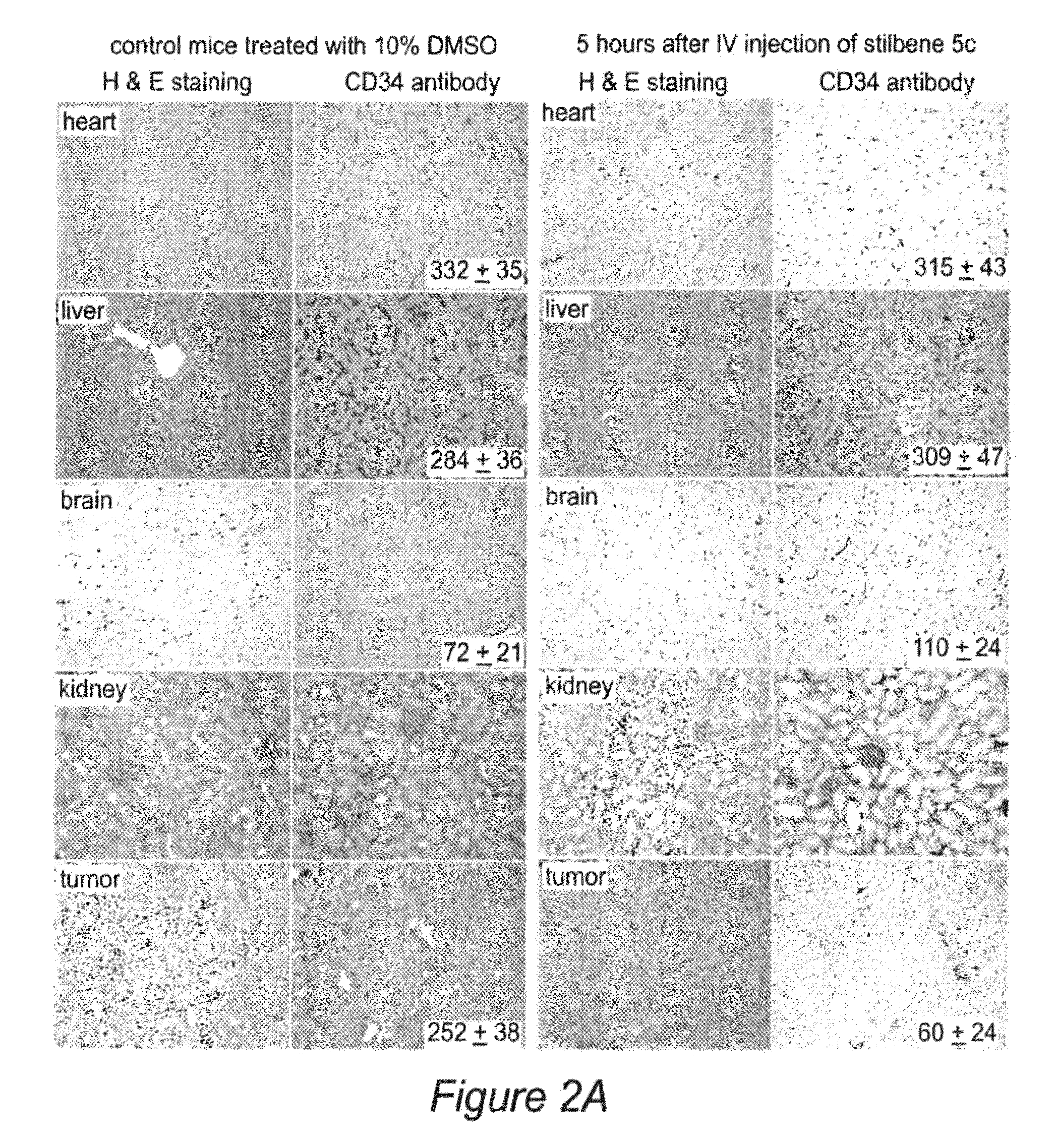Induction of tumor hypoxia for cancer therapy
a tumor and hypoxia technology, applied in the field of tumor hypoxia induction for cancer therapy, can solve the problems of hypoxia in the isolated, targeted region and hence haba activation, and achieve the effect of reducing or minimizing side effects, enhancing the anti-tumor activity of hypoxia-activated
- Summary
- Abstract
- Description
- Claims
- Application Information
AI Technical Summary
Benefits of technology
Problems solved by technology
Method used
Image
Examples
example 1
Suppression of Tumor Vasculature by Stilbene 5c
[0062]Stilbene 5c was investigated to examine whether it can suppress tumor blood flow and eventually lead to tumor hypoxia. A rapid kinetic study showed that after 10 min of rapid increase the gadolinium signals reached plateau and persisted for at least 30 min without washing out (11). We chose 30 min after injection for studying the images in plateau, and compare same tumor of the same mice before and after stilbene treatment to avoid any variation among mice. Mice were first imaged without contrast to obtain a baseline (FIG. 1, left upper panel). The section was obtained at the center of the tumor. Kidney in the same section was used as an internal organ control from tumor in the same mice. After injected with 20 μl of gadolinium (OmniScan) via the tail vein, mice were analyzed with a rapid sequence MRI every minute for total of 30 min. Both tumor and kidney exhibited enhancement of MRI signals after injection of gadolinium, which r...
example 2
Immunohistochemistry Staining with CD34 Vascular Marker in Sections of Tumor and Normal Organs
[0063]We took tissues that were studied with DCE-MRI to investigate the vascular density of tumor and correlate with the results from DCE-MRI-derived vascular perfusion studies. We particularly examined sections from heart and brain, where the toxicity of colchicine site inhibitors was observed. Tissue sections were stained with standard H & E and anti-CD34 (an endothelial marker) antibody by immunohistochemistry staining. The H & E staining did not show any significant changes in any major organs after stilbene 5c treatment (FIG. 2). There was also no histological difference in tumor either. We then used anti-CD34 staining to score microvascular density in tumor and various normal organs (54, 55). The results are indicated at the right lower corner of each panel except kidney, which cannot be scored due to fusion of the capillary network rather than discrete dots or tubes in appearance. Tr...
example 3
Induction of Tumor Hypoxia by Representative VDA Stilbene 5c to Facilitate Activation of Tirapazamine
[0064]In this study, we performed proof of concept study with VDA stilbene 5c to confirm that stilbene 5c induce tumor hypoxia. Previously in Example 1, we have used dynamic contrast-enhanced MRI study to prove that stilbene 5c can successfully inhibit tumor blood flow. However, the technique of DCE-MRI study cannot be used as a continuous monitoring tool and could not record how fast stilbene 5c induces suppression of tumor blood flow and how fast it can induce tumor hypoxia. To achieve the purpose of real time monitoring, we use oxygen and blood flow sensor to record the real time changes within the first 20 min after mice are treated with stilbene 5c.
[0065]There are several issues that need to be considered in order to interpret the results. Tumor blood flow and tumor oxygen level are dependent on the location of the probe in the tumor. The more peripheral the location of the prob...
PUM
| Property | Measurement | Unit |
|---|---|---|
| size | aaaaa | aaaaa |
| size | aaaaa | aaaaa |
| drug resistance | aaaaa | aaaaa |
Abstract
Description
Claims
Application Information
 Login to View More
Login to View More - R&D
- Intellectual Property
- Life Sciences
- Materials
- Tech Scout
- Unparalleled Data Quality
- Higher Quality Content
- 60% Fewer Hallucinations
Browse by: Latest US Patents, China's latest patents, Technical Efficacy Thesaurus, Application Domain, Technology Topic, Popular Technical Reports.
© 2025 PatSnap. All rights reserved.Legal|Privacy policy|Modern Slavery Act Transparency Statement|Sitemap|About US| Contact US: help@patsnap.com



